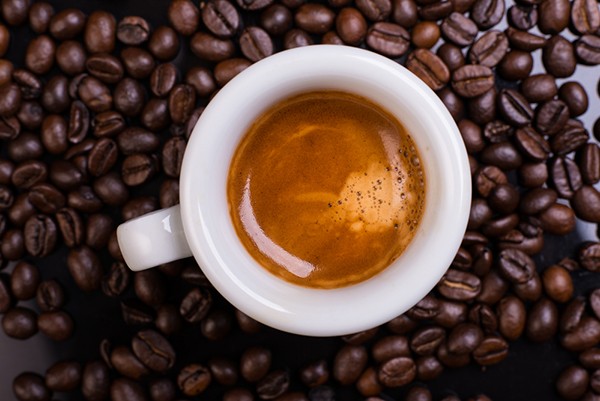Embarking on an exploration of the coffee world, espresso stands out with a special place in my heart. It’s more than just a beverage—it’s an immersive experience. I still remember the first sip of espresso I enjoyed in a cozy Roman café. With a practiced hand, the barista crafted a shot that left me both invigorated and captivated. That tiny cup was bursting with complex flavors, sparking a deep appreciation for the artistry and science behind espresso.
The Craft of Espresso
Espresso’s allure lies not only in its bold flavor but in the meticulous process required to create it. At its essence, espresso is a concentrated coffee served in small, potent shots. The process involves pushing nearly boiling water through finely ground coffee beans under intense pressure, drawing out flavors often lost in other brewing methods. The result is a rich, layered drink with an intricate depth of flavor.
A hallmark of a well-made espresso is the crema—the golden-brown foam that forms on top. This crema, a result of properly extracted coffee oils, adds a smooth, velvety texture and a hint of sweetness that offsets the bold bitterness of the espresso.
A Deeply Rooted History
The origins of espresso trace back to early 20th-century Italy. The invention of the espresso machine, attributed to Angelo Moriondo in 1884 and later refined by Luigi Bezzera and Desiderio Pavoni, revolutionized coffee. It allowed for rapid brewing, perfectly fitting the fast pace of Italian life. Over time, espresso bars emerged as social gathering places, where people connected over quick, intense shots of coffee.
Espresso: More Than Just a Drink
During a visit to Milan, I had the opportunity to explore the city's famed espresso bars. I realized that espresso in Italy is more than a drink—it’s an ingrained cultural experience. Italians often stand at the bar, exchange pleasantries, and enjoy their espresso swiftly before moving on with their day. Inspired by this ritual, I decided to bring the espresso experience home by investing in my own espresso machine.
Perfecting the art of pulling a shot became a personal journey. From adjusting grind size to perfecting tamping pressure and water temperature, each step required careful attention. Mornings turned into an opportunity to refine my technique and immerse myself further in the craft of espresso.

Espresso’s Versatility in Coffee Creations
Espresso isn’t limited to a single form; it serves as the foundation for many beloved coffee drinks. A simple macchiato with a touch of steamed milk or a creamy cappuccino made with equal parts espresso, milk, and foam showcases espresso’s adaptability. These variations allow espresso to cater to a wide range of tastes while maintaining its bold character.
Discovering Coffee Bean Origins
As I delved deeper into the world of espresso, I became fascinated by the origin of coffee beans. Espresso’s flavor profile shifts dramatically based on the region where the beans are grown and their roast level. Ethiopian beans, for instance, are known for bright, fruity notes, while Brazilian beans offer nutty, chocolatey undertones. Roasting styles further enhance this complexity—light roasts preserve the bean’s original traits, while darker roasts bring out rich, caramelized flavors.
Ethical sourcing and sustainability also became priorities. Supporting roasters who value fair trade and environmentally-friendly practices added another layer of satisfaction to my espresso routine. Knowing my espresso choice could positively impact farmers' lives made each cup even more fulfilling.
The Precision of Espresso Making
Creating a perfect shot of espresso involves both art and science. A precise balance—usually 7 grams of coffee for a single shot, with an extraction time of around 20 to 30 seconds—is essential. Straying from these guidelines can result in under-extraction, which produces sour notes, or over-extraction, leading to bitterness. This precision adds to the challenge and reward, turning each well-made shot into a small, personal accomplishment.
While I’ve tried other methods, like the Moka pot or AeroPress, they don’t quite replicate the unique experience of a true espresso shot. These alternatives can produce concentrated coffee, but they lack the depth of an authentic espresso.
Sharing Espresso Moments
One of the greatest joys of my espresso journey has been sharing it with others. Hosting gatherings where I prepare various espresso-based drinks introduces friends and family to the depth and richness of espresso. Seeing someone’s face light up at their first taste of a well-prepared shot is a delight I never tire of.
:max_bytes(150000):strip_icc()/__opt__aboutcom__coeus__resources__content_migration__serious_eats__seriouseats.com__2018__06__20180613-coffee-vs-espresso-vicky-wasik-3-1500x1125-418fa2a14e7249b18040c2c34bf8569c.jpg)
Conclusion: Espresso—A Ritual of Life’s Simple Pleasures
Espresso is far more than a drink; it’s a passion that weaves together history, culture, science, and social connection. Each cup tells a story, whether enjoyed in a bustling café or in the quiet comfort of home. Espresso enriches moments, reflecting both tradition and innovation. Whether savored alone or shared with others, it’s a ritual that celebrates life’s simple yet profound pleasures.
